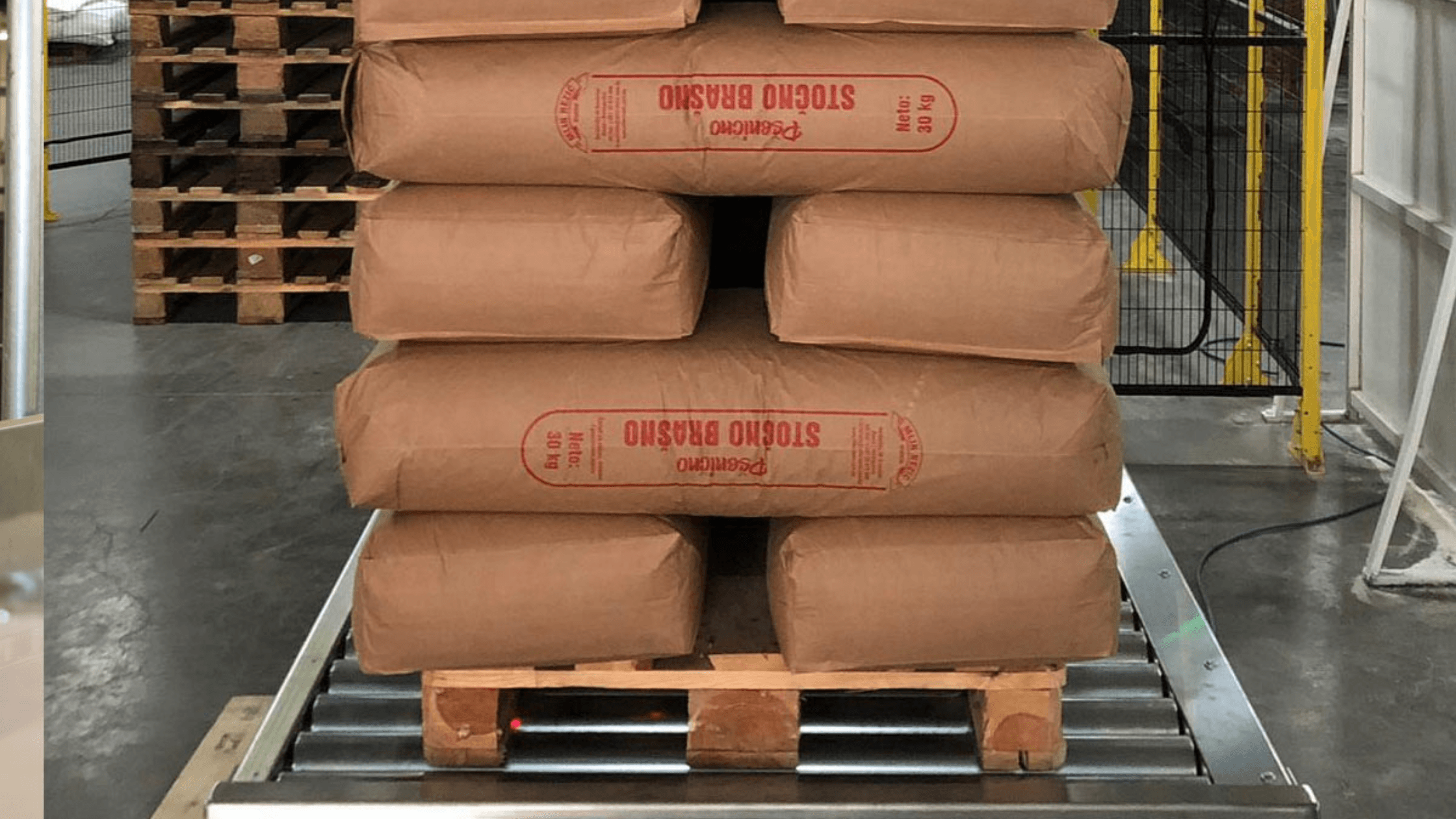A complex and specialised system, automatic sack palletising isn’t as straightforward as it looks.
Placing products onto pallets by hand is time consuming and physically demanding work. It’s a natural progression to employ a robot palletiser for busy production lines. But how do automatic palletisers create the perfect stack? It seems simple, but there are a few key steps to loading a stable and consistent pallet. Each of the following steps is programmed into an automatic sack palletiser for maximum efficiency.
1. Bag preparation is critical. The bag or sack needs to be as consistent as possible, so using rumble rollers, flattening roller or tapered belt pressing – or even a combination of all three – will ensure the sack is flat, before being collected.
2. The sack palletising gripper then locates and picks up a bag from a layer table or conveyor – each can weigh hundreds of pounds. It holds the sack firmly, without puncturing the packaging, and doesn’t allow the product inside to move during the pick and place cycle.
3. The pattern of sacks on the pallet has to be laid out in such a way that the shape remains consistent.
4. The speed of the robot will vary, slowing slightly when moving sacks and working at full speed when the gripper is empty.
5. Each layer is measured for height variation to avoid a cumulative error.
Our Europack sack palletiser stacks 1200 sacks per hour. See it in action here:
With 25 years’ experience, PALpack works with you to find an automated solution for your manufacturing and production lines, making improvements in efficiencies and reductions in production costs. Our high-speed Europack sack palletisers come with UK-based engineering support, spares and servicing.

